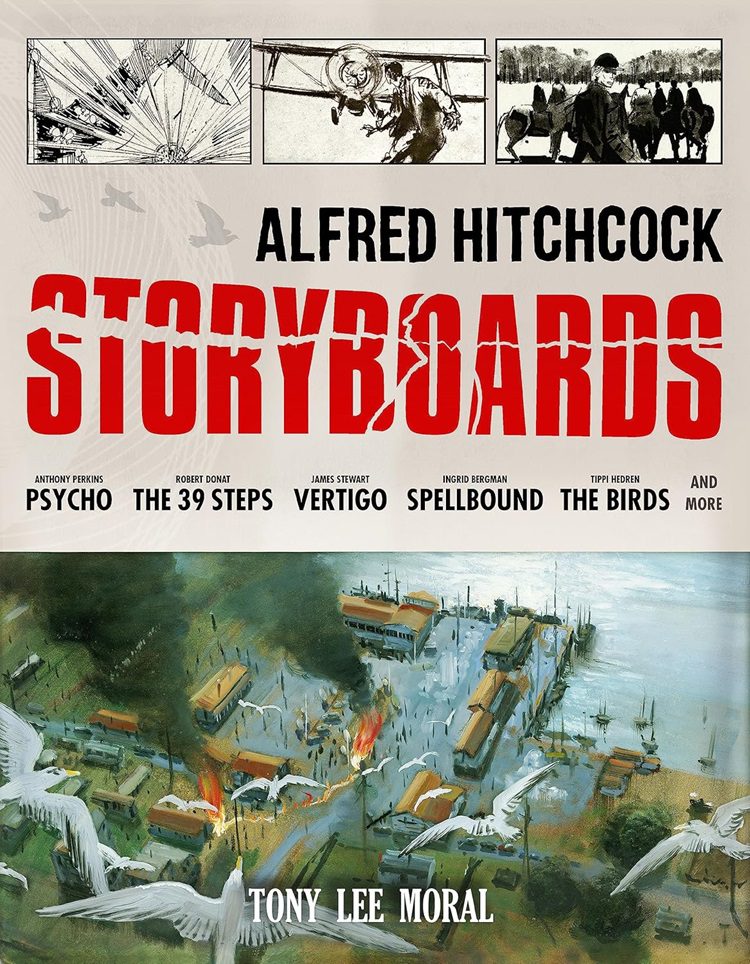
As author Tony Lee Moral states in his Introduction, “No other director is more strongly associated with storyboarding than Sir Alfred Hitchcock,” who directed 55 feature films, starting with The Pleasure Garden (1925) and concluding with Family Plot (1976). From an archival interview, Hitch says, “as a director, it is my job to communicate my vision of the screenplay to the director of photography, the production designer, and the actors.” He did this through storyboards, which Moral defines for the uninitiated “as an illustrator’s rendition of the vision of the…director.”
Buy Alfred Hitchcock Storyboards by Tony Lee MoralFor those curious about how films are made, Moral focuses chapters on The 39 Steps, Shadow of a Doubt, Spellbound, Vertigo, North by Northwest, Psycho, The Birds, Marnie, Torn Curtain and in the book’s Conclusion, a brief look at Topaz and Family Plot. After a brief biography about Hitchcock, Moral presents The 39 Steps‘s cast and crew listing along with a plot summary. Amid quotes from Hitch about storyboarding, Moral writes about the film and the filmmaker. There are a number of detailed storyboards, which for The 39 Steps have been done in water color. Moral concludes the chapter focusing on art director Oscar Werndorff, whose job doesn’t get the appreciation it deserves from the general public.
Shadow of a Doubt follows a similar template with illustrator Dorothea Holt getting the spotlight. She first worked with Hitch of Rebecca, so three pages are devoted to that film within the Shadow chapter. The Spellbound chapter includes original designs by Salvador Dali, who was hired to work on the film’s dream sequence.
As the book progresses, readers get details about scenes from Hitchcock’s filmography that are some of the most iconic in the history of cinema: Vertigo‘s opening rooftop chase, North by Northwest‘s cropduster attack (along with the controversy regarding that scene’s storyboards) and Mount Rushmore climax, Psycho‘s infamous shower scene, and The Birds attacking a schoolhouse.
In Alfred Hitchcock Storyboards, Moral has created a fascinating book for Hitchcock fans and those curious about the making of films. It offers wonderful insights into Hitchcock’s filmmaking approach, especially those from Hitch himself. The book will also make you want to watch the films to see how close the storyboards match. And if by some chance you haven’t seen one of them, skip the plot summaries.